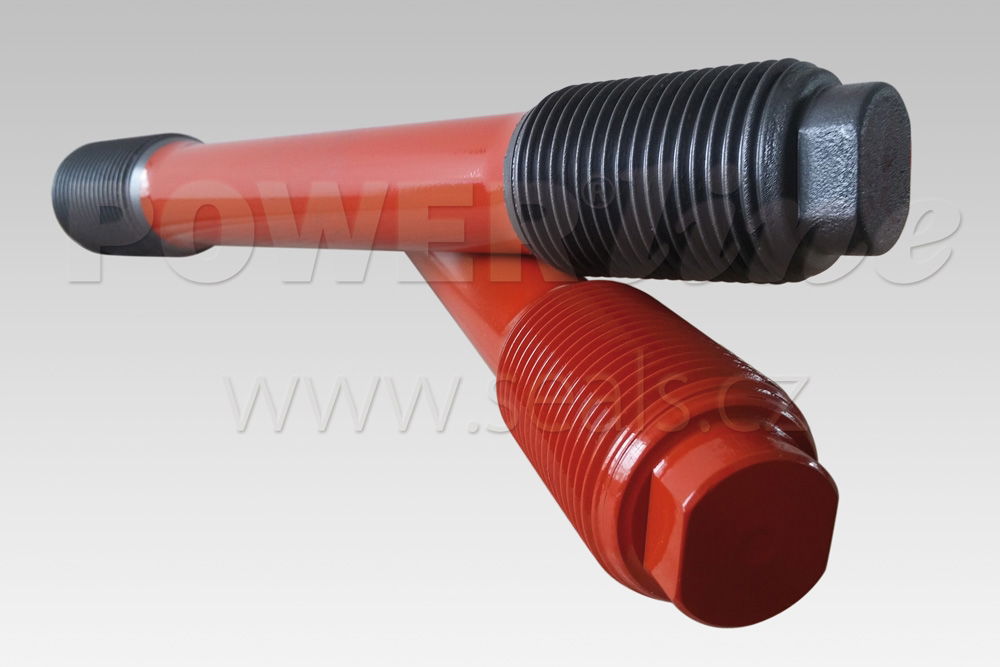Access to prices and online shopping
Overview of your purchased items
Contact your sales representative and clerk
Educational materials
News about industrial seals
Information on new products and services
Exclusive hints and tips
Fill in your contact details and we will get back to you as soon as possible.
We will call you at your chosen time and advise you on what you need.
Our sales and technical representative will come to your company for a personal consultation.

Based on our many years of experience, we know that just delivering a catalogue with a seal to the customer's desk is not enough. For this reason, we offer industrial companies a helping hand with comprehensive solutions for leaks in their plants.
Detailed knowledge of the lubricants used in the assembly of bolted joints is an integral part of our solutions. In this article, we would like to present our findings concerning the effect of friction in the thread and under the nut on the calculation of the tightening torque and the tightness of the flange joint.
For the lubrication of bolted joints, a lubricant should be used for which information on the coefficients of friction in the thread (µth) and under the nut (µb) is provided by the manufacturer. These values must be measured according to EN 16047, which describes the method and procedure for measuring friction in a bolted joint. Knowing the coefficients of friction (µth) and (µb) tells us in what proportion the bolted joint is stressed in terms of torsion and tension.
The friction value given by the manufacturer based on another measurement method, e.g. the four-ball test or Pin-on-Disc test *, is misleading for the calculation of the tightening torque. The actual friction value measured by a method other than EN 16047 may vary significantly.
At our specialist facility, we measure friction coefficients (in the thread and under the nut) and their dependencies in the bolted joint according to EN 16047.
Experimental measurements of the friction coefficients µtha µbhave shown that the variance of the values for dry, i.e. unlubricated, fasteners is considerable. The error in the calculation of the tightening torque Mu can be as large as ±30 %.
In a bolted joint there is a significant difference between the effect of friction in the thread and friction under the nut. Both of these parameters have an effect on the magnitude and variance of the preload achieved in the bolt, but the impact on the bolt stress is different.
The coefficient of friction (µth) affects the torsion component and the coefficient of friction under the head (µb) affects the efficiency.
Therefore, it is not assumed that the thread friction coefficient µth, the under-nut friction coefficient µb and the total coefficient µtot are equal (µth ≠ µb ≠ µtot). Also, the results from experimental measurements have shown variance in the friction coefficients µth, µb and µtot. Therefore, the simplification µth = µb = µtot cannot be used.

The friction torque in the thread is generally 2/3 of the total tightening torque.
From the above, it follows that if the friction coefficients are calculated to be equal, then the resulting tightening torque may be insufficient or, conversely, overloaded.
Based on hundreds of measurements, over a decade ago we developed a lubrication system POWERtorque LF kote 450 that provides a desired and constant coefficient of friction in the thread and under the nut during tightening.
This is a "dry lubrication" system that is permanently anchored into the thread surface. It withstands the extreme compressive loads applied to the thread surfaces during tightening. The POWERtorque LF kote 450 permanently separates the bolt and nut materials. This prevents "thread biting" and allows the fastener to be loosened afterwards.
As support for designers and calculators of flange connections, we provide the results of our measurements on the website.
Into the calculator you need to enter:
The result is the tightening torque Mu and a check of the bolt in terms of tensile stress σt [MPa], torsion τk [MPa] and reduced stress for lubricant POWERtorque LF kote 450.
![Example of displaying the result of Mu. tightening torque calculation]](/files/Clanky/clanky_lfkote_5.jpg) Example of displaying the result of the calculation of the tightening torque Mu.
* Four-ball test: method of measuring the coefficient of friction for oils and lubricants. The lubricant load resistance and general wear index are evaluated. It is divided into ASTM D 2596 weld test and D 2266 wear test.
** Pin-on-Disc: The measurement consists of pressing a firmly attached ball-shaped test body ("PIN") of a selected material into a disk (test specimen) with a predefined force.
© Pokorny industries s.r.o. 2025 - all rights reserved
Made by servisdesign
You don't know what to do?